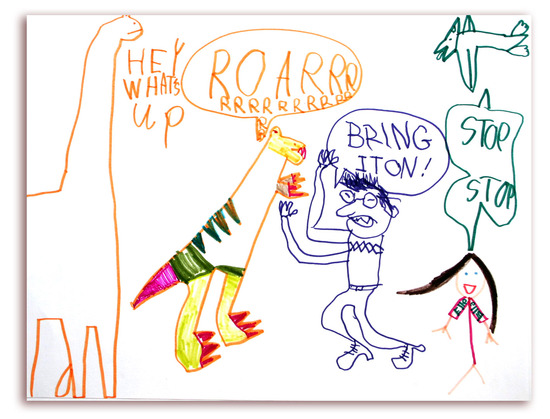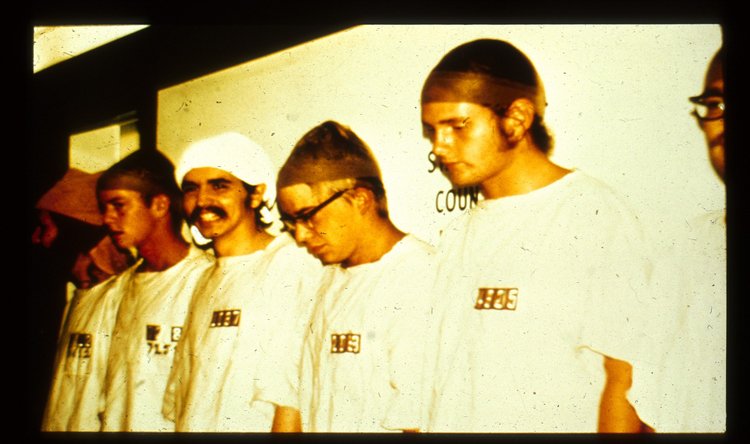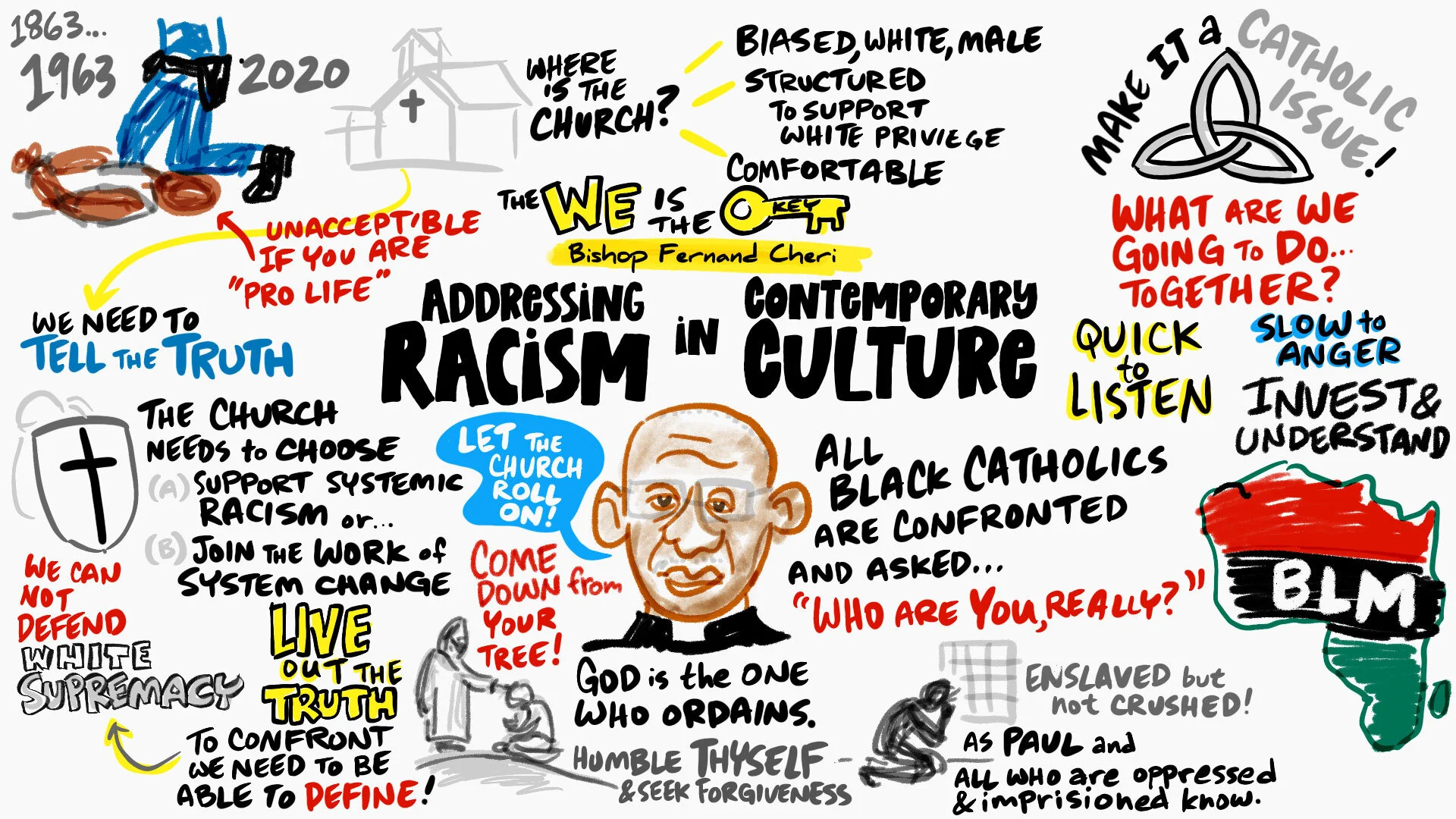WARNING: Designers Tend to Fall Prey to Ideas!
/ "Designer vs. Dinosaur" by Lillian (6) and Peter (40)
"Designer vs. Dinosaur" by Lillian (6) and Peter (40)
Robert "Fabi G" Fabricant is inspiring jealousy (in me) by being in East Africa, blogging, and hobnobbing with the globally challenged superheroes and villains at the World Economic Forum.
His observations in his Fast Company post examine the long shadow cast by the rise of Design Thinking.
Specifically, Fabricant calls out the dirty little secret that designers--while clever, innovative and unafraid of funky footwear--don't actually know how to get stuff done within complex systems.
Robert has some scar tissue from this issue. He works for frog design in the area of designing innovative solutions in a sector as murky and dangerous and morally ambiguous as Joseph Conrad's Heart of Darkness: The Healthcare Jungle!
This tangled morass of competing systems is the multi-tiered battleground where the Innovative Thing and the Legal Thing and the Moral Thing and the Money Thing and the Political Thing are embroiled in a constant Dinosaur vs. Innovator battle for control, influence and "value".
(Check out the collaboration know as Project M battling the AIDS Thing with the Mobile Thing.)
So, what is Robert's advice for designers, who choose to wade willingly into the murkiness of social change?
Unfortunately, designers tend to fall prey to ideas that are too attractive and we don't generally have the patience for the lengthy process to see initiatives through to the point of meaningful results (particularly if those results run counter to our attractive ideas). I recently gave a talk in NYC (as part of Liz Danzico's wonderful dot dot dot series for SVA) to communicate some of the challenges I see designers facing as they work in this area. I highlighted eight lessons I have learned from my experience on Project Masiluleke and other social impact partnerships over the last couple of years. Here they are in brief:
1. Undervalue Your Own Ideas. They may seem pretty clever to you, but chances are that they won't work the way that you are imagining. Trust me on this one.
2. Don't Pursue Perfection. Keep close to the messy realities on the ground. And test your ideas while they are rough (they will likely stay that way for a long time).
3. You Are Not the Only Creative in the Room. Social entrepreneurs are not only creative, they are fearless. You may find yourself struggling to keep up.
4. Your Perspective Is Not Automatically Unique. Research and empathy are critical to inform and inspire the design process. But it takes time to develop a viable perspective. You won't walk in with one.
5. Learn From Your Elders. There are a number of creative professions, such as urban planning, that have been engaged with social issues for some time. Yet they are rarely represented in current discussions. You would think that this generation of designers are the first to take on social impact.
6. The Web Will Not Save You. While the Internet and mobile technologies are important points of leverage, you need to resist the temptation to assume that communities will miraculously adopt and value these tools just because we thought them up.
7. You Better Be In It for the Long Haul. Ideation is just the beginning. Ideas are cheap. The determination and stubbornness to see them through is critical. Don't underestimate the time it will take.
8. Don't Celebrate Too Early. The design world has hurt its credibility with many social impact organizations by celebrating the wrong thing: Clever ideas that capture our imagination (like the Lifestraw or the Hippo Roller) but have major challenges in the field.
So, with that in mind, I am escaping...well sort of. This year I have looked outside the typical design and innovation venues, attending the Social Enterprise Conference at Harvard Business School in February, visiting the Earth Institute and now the WEF. I want to place myself in environments in which designers are in the distinct minority to see if I can gain a different perspective. I will be blogging from the conference for the rest of this week. So please stay tuned for more updates and follow my tweets at @fabtweet.
Read Robert Fabricant's Design4Impact blog
Browse blogs by our other Expert Designers








